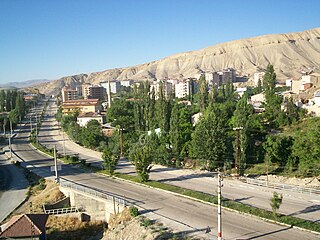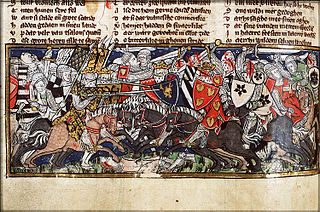Related Research Articles

The Battle of Nedao was a battle fought in Pannonia in 454 between the Huns and their former Germanic vassals. Nedao is believed to be a tributary of the Sava River.
Attila is a popular masculine name in Central-Eastern Europe and in Western Asia and South-Eastern Europe. Another version of Attila in Hungary is Etele, the female equivalent of which is Etelka. Another version of Attila used in Turkish is Atilla.
The Akatziri or Akatzirs were a tribe that lived north of the Black Sea, though the Crimean city of Cherson seemed to be under their control in the sixth century. Jordanes called them a mighty people, not agriculturalists but cattle-breeders and hunters. Their ethnicity is undetermined: the 5th-century historian Priscus describes them as ethnic (ethnos) Scythians, but they are also referred to as Huns. Their name has also been connected to the Agathyrsi. However, according to E. A. Thompson, any conjectured connection between the Agathyrsi and the Akatziri should be rejected outright.

Peter Benjamin Golden is an American historian who is Professor Emeritus of History, Turkish and Middle Eastern Studies at Rutgers University. He has written many books and articles on Turkic and Central Asian Studies, such as An introduction to the history of the Turkic peoples.

Darende is a district in Malatya Province, Turkey. The district lies 46 miles (74 km) to the northwest of Malatya, 87 miles (140 km) south of Sivas, 110 miles (180 km) east of Kayseri.
Plevna March or Osman Pasha March was written in order to commemorate Osman Pasha, who led Ottoman troops in the Siege of Plevna.

Ismail Fazıl Pasha, the son of Mustafa Fazl Pasha was an Ottoman general. He was commander of the Ottoman Army, a politician, statesman of the Ottoman Empire and the government of the Grand National Assembly of Turkey. He married Zekiye Hatice Hanim, who was daughter of Mehmed Ali Pasha. They had two sons, Ali Fuat Cebesoy and Mehmet Ali Cebesoy.
Az were Turkophone people from present-day Russia whose origins are still vague. Their existence is confirmed by the Tannu-Ola mountains inscriptions of Mugur-Sargol and Bayan-Kol and certain verses of the Göktürks, while describing the battles between the Göktürks and the Kyrgyz. According to the Bayan-Kol inscriptions, the Az were divided to many clans living in the region of Mugur west of the Tannu-Ola mountains. There are also writings from the 8th century in Uyghur sources about the uprising of the Az against the Göktürks.

F. Tulga Ocak was a Turkish academic and professor of classical Turkish literature and Persian language. She worked at Hacettepe University.

Laudaricus was a prominent Hunnic chieftain and general active in the first half of the 5th century.
The history of the Huns spans the time from before their first secure recorded appearance in Europe around 370 AD to after the disintegration of their empire around 469. The Huns likely entered Western Asia shortly before 370 from Central Asia: they first conquered the Goths and the Alans, pushing a number of tribes to seek refuge within the Roman Empire. In the following years, the Huns conquered most of the Germanic and Scythian barbarian tribes outside of the borders of the Roman Empire. They also launched invasions of both the Asian provinces of Rome and the Sasanian Empire in 375. Under Uldin, the first Hunnic ruler named in contemporary sources, the Huns launched a first unsuccessful large-scale raid into the Eastern Roman Empire in Europe in 408. From the 420s, the Huns were led by the brothers Octar and Ruga, who both cooperated with and threatened the Romans. Upon Ruga's death in 435, his nephews Bleda and Attila became the new rulers of the Huns, and launched a successful raid into the Eastern Roman Empire before making peace and securing an annual tribute and trading raids under the Treaty of Margus. Attila appears to have killed his brother and became sole ruler of the Huns in 445. He would go on to rule for the next eight years, launching a devastating raid on the Eastern Roman Empire in 447, followed by an invasion of Gaul in 451. Attila is traditionally held to have been defeated in Gaul at the Battle of the Catalaunian Fields, however some scholars hold the battle to have been a draw or Hunnic victory. The following year, the Huns invaded Italy and encountered no serious resistance before turning back.

Faculty of Language and History – Geography is a school of the Ankara University, Turkey. It doesn't have a common campus with the Ankara University. DTCF has its own building on Atatürk Boulevard of Ankara at 39°55′47″N32°51′20″E. The architect of the building was Bruno Taut.

Emirate of Kilis was a Kurdish emirate which ruled the Kilis and Aleppo regions up until the disintegration of the Ayyubid dynasty in 1264. The rulers of this principality were descendants of Sheikh Fakhraddin, who is one of the greatest Yezidi philosophers and one of the most important saint figures. The main religion of this principality was Yazidism.
Kursich was a Hun general and royal family member. He led a Hunnish army in the Hunnic invasion of Persia in 395 AD.
Scottas or Skottas was a Hun nobleman, ambassador and advisor. He was the brother of Onegesius.
Chelchal was a Hun commander serving as lieutenant general under the Byzantine Empire.
Ultzindur was a Hun nobleman and a blood relative of Attila.
Aybars is a Turkish forename meaning either “gray/yellow leopard” or “leopard of the moon” related to Turkic mythology. The stem of the name comes from "ay" and "bars". However, according to Pritsak and Nishanyan, the first word is "oy" rather than "ay", which means 'gray' or 'yellow' or 'brown', hence the meaning of the name is 'yellow/gray/brown leopard', referencing to lion.
References
- ↑ Man, John (2010). Attila The Hun. Transworld. p. 156. ISBN 9781409045366 . Retrieved 26 October 2022.
- ↑ Ankara Üniversitesi. Dil ve Tarih-Coğrafya Fakültesi (1943). Ankara Üniversitesi Dil ve Tarih-Coğrafya Fakültesi dergisi Volume 2 (in Turkish). Türk Tarih Kurumu Matbaasi. p. 557. Retrieved 26 October 2022.
- 1 2 3 Bleeker, Ronald A. (2022). Aspar and the Struggle for the Eastern Roman Empire, AD 421–71. Bloomsbury Publishing. p. 69. ISBN 9781350279278 . Retrieved 26 October 2022.
- ↑ Kim, Hyun Jin (2015). The Huns. Taylor & Francis. p. 79. ISBN 9781317340911 . Retrieved 26 October 2022.
- ↑ Wolfram, Herwig (2005). Dunlap, Thomas (ed.). The Roman Empire and Its Germanic Peoples. University of California Press. p. 143. ISBN 9780520244900 . Retrieved 26 October 2022.
- ↑ Neshanyan, Savan. "Aybars - Nishanyan Names". Nişanyan Adlar. Sevan Nişanyan. Retrieved 17 March 2023.
- ↑ Kim, Hyun Jin (2021). Rome and China: Points of Contact. London. pp. 139–40. ISBN 9781315280714 . Retrieved 17 March 2023.
- ↑ Sabbatini Tumolesi, Patrizia; Gregori, Gian Luca; Orlandi, Silvia; Buonocore, Marco; Fora, Maurizio; Vismara, Cinzia; Caldelli, Maria Letizia (1988). Epigrafia anfiteatrale dell'occidente romano Volume 6 (in Italian). Quasar. pp. 354, 473. ISBN 9788871402659 . Retrieved 26 October 2022.
- ↑ Hodgkin, Thomas (1892). Italy and Her Invaders: The Hunnish invasion. The Vandal invasion and the Herulian mutiny. Clarendon Press. p. 74.